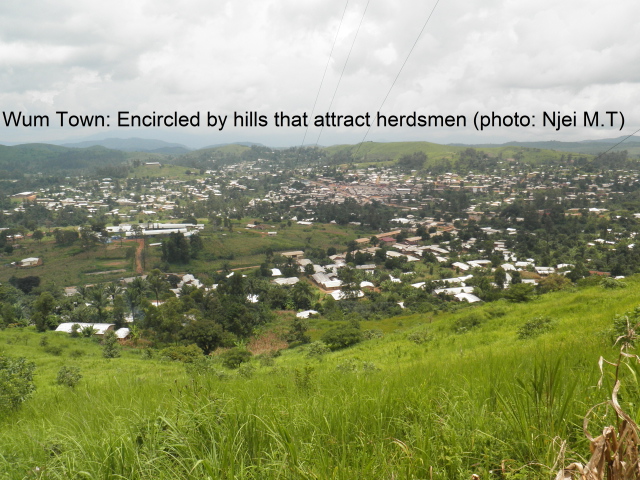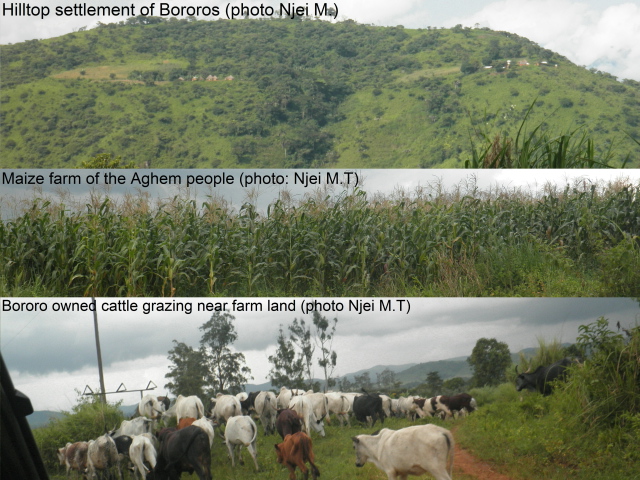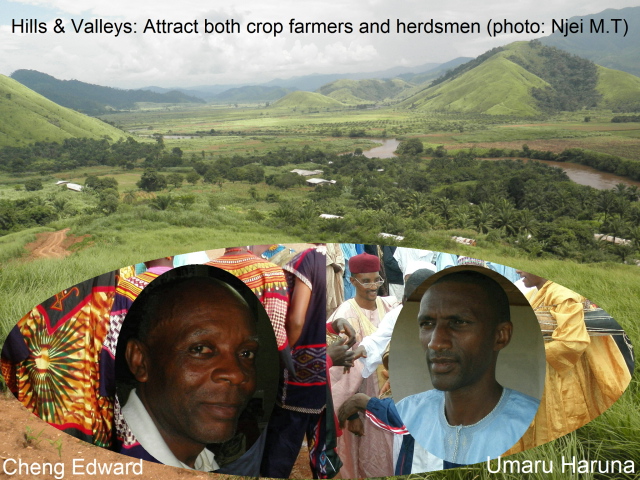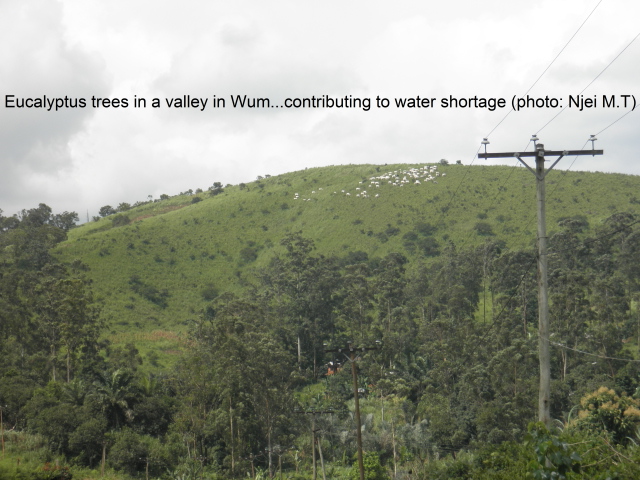10 Sep 2010
This is a problem that affects people in a belt in Africa that stretches from Senegal in the West to the Horn of Africa in the East
The City of Jos in Central Nigeria has been in the news of recent because of the very bloody clashes between the Hausa/Fulanis (predominantly Muslims and mainly pastoralists & traders) and other ethnic groups that are mainly crop farmers and non Muslims. I lived in Jos for years in the late seventies and early eighties when the seeds for the current crisis were being sown by politicians that preferred to ride on the people’s sentiments and differences into public offices. Today, a conflict that would have been over resources and land utilization has now taken a bloody sectarian outlook.
In Cameroon there are pockets of problems with similar ingredients that are gradually germinating and apparently, few people are seeing the Jos scenario in the near future. The rearing of cattle is a principal activity in four of Cameroon’s ten administrative regions. Wum in Menchum Division of North West Region is a case study of the Crop Farmer/pastoralist problem in Cameroon. For the past four decades there have been intermittent skirmishes between the Borroros (graziers) and the Aghem people who are predominantly crop farmers. The conflict usually begins when cattle have strayed into farmlands and destroyed crops. As usual, with the advent of multiparty politics, conflicts between different ethnic groups have soared and that includes the one between the Aghems and Borroros (called locally as ‘Akus’).

I visited Wum recently to discuss the issue with ordinary people and some more informed people on both sides of the divide. Wum central Subdivision has the characteristics that favour the coexistence of pastoralists and crop cultivators. The Aghem people who first settled in this lush hilly savannah zone tend to build their dwelling places in close crammed places while their farm lands are kilometers away. Their predominantly female farmers tend to cultivate such crops like maize, groundnuts, beans and vegetables on valleys, plains and the hill sides of land that belongs to their male folks.
It was in the fifties that the first Bororos led by their late chief (Ardo Umaru) migrated from Jos, Nigeria to Wum. While their leader was permanently settled at a location fenced with barbed wire on the outskirts of Wum, many of his subjects and later day migrants were usually nomadic. It was common then to see them dismantle or abandon their huts and move on to other places where there was attractive vegetation for their herds. This constant change of dwelling places by Bororos in the past led them to be called ‘nomadic herdsmen’. Today most of them have built permanent houses mostly on the hills and reside in fixed localities and identify themselves as indigenes of the same area with other crop cultivators. There are many people in Wum and elsewhere in Cameroon that still have that ‘nomadic’ appraisal of the Bororos engrained in their thinking. To such people, the Bororos are ‘here temporary’ and they will one day go. The reality is that they have become an integral part of the communities where they reside and the probabilities that more will migrate into the communities are higher than the prospect of any leaving.
Like in Jos, the Bororos in Wum are predominantly graziers &Muslims while the other neighboring ethnic groups are Crop farmers and non Muslims…the type of professional & cultural divide that conflicts usually prey on.
The reason of my trip to Wum, was to have exploratory discussions with concerned parties to see how future conflicts could be averted and how the culturally dissimilar communities could co-exist.
I met Haruna Umaru (the brother to the current leader of Bororos in Wum) at his residence on Bu road on the outskirts of the city. “My father migrated from the Plateau State [of Nigeria] and entered Cameroon through Mamfe in the fifties. He was in Mamfe for about two years before moving to Wum. Since he settled here, he had never changed residence.” Haruna, his brothers and sisters that were born in Wum are now parents and even grandparents who have known no other home than Wum. I asked Haruna to briefly review the state of their coexistence with other non Bororos and he had this to say; “When this problem (grazier/crop farmer conflict) started in 1973, the governor set up a commission to come and demarcate boundaries between the opposing communities. Some of the graziers that were settled on farmland were moved. At least, peace returned. Some crop farmers did not eventually occupy the land that was allocated to them and as such some Aghem chiefs went into arrangement with some Bororos and ceded part of the unoccupied land to them. Since the land was given to the Bororos by the traditional rulers, it was always easy for Bororos to arrange any problem of crop destruction with them. There was relative calm until 2003”.

It will be recalled that during the ensuing 2003 crisis, thousands of Aghem women held their main traditional ruler hostage in his palace effectively accusing him of either complicity or complacency with regards to the issue of Bororos occupying their farmlands. During the crisis, emotions were raised and anybody trying to approach the issue from a balanced rational angle could easily be accused by one party or another. That was the case with the then Mayor of Wum Council Mr Cheng Edward who tried to handle the issue in a balanced way. Said he; “I came into office when the farmer/grazier problem was at its apex. In the process of trying to solve the problem fairly, some of my own people accused me of having taken bribe from the Bororos and threatened to burn my house.” Cheng admitted that the problem has its “political ramifications” and that he tried to explain to his people not to handle this issue with “sentiments”. Adding; “In the past the Bororos were nomadic but today they are sedentary”. He was of the opinion that the two communities should work hard towards peaceful coexistence and seek and embrace the things that will enhance mutual benefit for both peoples. It was exactly the same wish of Haruna Umaru who told me that; “we have decided that the best thing to do is to dialogue”. He told me that the Bororo Cultural and Development Association in partnership with other organizations and NGOs is trying “to see how we can go about this issue of dialogue”. They have set up a Dialogue Platform Committee comprising, graziers, crop farmers, state authorities, representatives of traditional council and Wum Council and facilitators.

Both Haruna and Cheng admitted that the past few years have been relatively peaceful in Wum. They both agreed that the current Divisional Officer for Wum Central Mr Wanja Gaston seems to be doing a good job. I tried unsuccessfully to meet and discuss with the Divisional Officer whom Haruna referred to as “a level headed man”. It should be recalled that in Cameroon, in addition to elected mayors, the Central government appoints local administrators (SDOs, Dos and governors) who in most cases do not come from the area where they have jurisdiction. Some of the appointed administrators are good, some are incompetent and others are outright corrupt. In conflict prone zones, a bad appointee can come and derail all the conflict prevention work done by his predecessors over the years.
That is the more reason I encouraged both parties to take advantage of the presence of the current Divisional officer to concretize and register the Dialogue Platform Committee.
In my discussion with various people, the main thing that usually sparks conflicts between the two communities is when cows stray into farmland and destroy crops. In most cases, when the owner of the cows has been identified, the Bororos usually accept to compensate the crop farmer for the loss of crops in accordance with a formular laid down by the government. In some cases, the crop farmer victims never get to lay hands on the culprit Bororos. One other frustration is the process of arriving at the compensation.
Typically, officials from the ministry of Agriculture, those from the ministry of livestock and those from territorial administration have to go for assessment of any destroyed crops before compensation. One will never know if there is a budget to finance such movements to sometimes difficult-to-access places, but what I seem to gather from talking to ordinary people is that the aggrieved party is usually requested to ‘give money for fuel’ to enable the gov’t functionaries get to the farmland. In situations like these, there are reported cases where the eventual money paid to the complainant may just be equal to what she paid for ‘fuel’. This effectively means that her problem has not been solved and the grudges remain. In my opinion a viable arrangement should involve setting up a body comprising predominantly farmers and graziers to handle this assessment/compensation issue with very minimal bureaucratic interference from civil servants that come and go. The people who are condemned to stay permanently together should take their destiny into their hands.
While in Wum, I noticed that like many other places in the N.W region, many small water bodies were drying up due to deforestation and the indiscriminate planting of eucalyptus trees that are said to be good at accelerating aridity. Because of this, waterholes that used to hold water all year round dry off at the peak of dry season. In desperation, the Bororos and their cattle are sometimes compelled to trespass farmlands to get to any available waterhole and in the process, crops get damaged and you can guess the rest. It is to be expected that as we experience climate change the frequency of these incidents will only increase.

For now, it seems we can only manage to contain the crisis from going out of control because of the web of problems associated with what Cheng Edward attributed to “traditional crop farming” and “traditional grazing”. According to him, this crisis will only come to an end when we can copy from the Western world how to contain and breed cattle in a fixed location and also how we can use a fraction of the farm land that we have today to produce 10 times our current output in food crops. While we wait to reach there, Haruna Umaru suggests that crop farmers in Wum can copy the example of farmers in Babanki. According to him, the grazier/farmer alliance in Babanki is a mutual beneficial system in which a farmer constructs a fence and the grazier allows his cattle to be sleeping there for a period of time thereby fertilizing the soil with cow dung. Crop yield on such treated land is usually high and the farmer now views the grazier like a partner and not a foe.
© 2010 by Njei Moses Timah
Njei Moses Timah
|